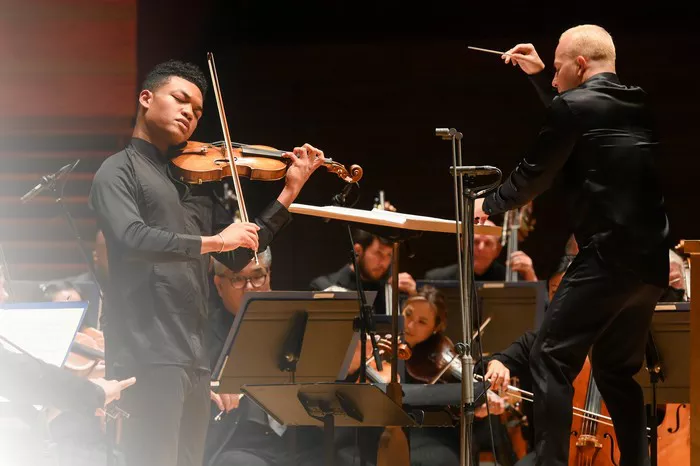“Sleeping with the Enemy” is a 1991 thriller that stars Julia Roberts. The film is notable for its suspenseful plot and dramatic tension. One of the most memorable elements of the movie is its soundtrack, which features classical music. This music plays a crucial role in setting the mood and enhancing the narrative. In this article, we will explore the classical music in “Sleeping with the Enemy,” focusing on its significance and impact.
I. Introduction
Classical music often elevates films by adding depth to scenes. In “Sleeping with the Enemy,” the use of classical pieces is strategic and impactful. The music not only underscores the drama but also becomes a symbol within the story.
II. The Role of Classical Music in Film
Classical music has long been used in films to convey emotions and enhance storytelling. It can create a sense of elegance, tension, or foreboding. In “Sleeping with the Enemy,” classical music serves several purposes:
Mood Setting: The music sets the tone for various scenes.
Character Insight: It provides insights into the characters’ inner worlds.
Symbolism: The music is symbolic of control and fear.
III. Key Classical Pieces in “Sleeping with the Enemy”
1. “Symphony No. 5 in C Minor” by Ludwig van Beethoven
One of the most famous pieces featured in the film is Beethoven’s “Symphony No. 5 in C Minor.” This symphony is known for its dramatic and intense first movement. The famous four-note motif (short-short-short-long) is instantly recognizable. In the context of the film, this piece is used to symbolize the menacing presence of the antagonist, Martin Burney.
a. Analysis of Beethoven’s Symphony No. 5
Beethoven’s Symphony No. 5 was composed between 1804 and 1808. It is one of his most well-known and frequently performed works. The symphony is divided into four movements:
First Movement: Allegro con brio – The famous four-note motif.
Second Movement: Andante con moto – A contrasting, more lyrical movement.
Third Movement: Scherzo. Allegro – A playful yet intense movement.
Fourth Movement: Allegro – A triumphant and powerful finale.
The first movement, with its ominous and relentless motif, perfectly captures the tension and fear that pervades the film.
2. “Nocturne in E-flat Major, Op. 9, No. 2” by Frédéric Chopin
Another significant piece is Chopin’s “Nocturne in E-flat Major, Op. 9, No. 2.” This piece is known for its gentle and lyrical quality. In the film, it represents the protagonist, Laura Burney’s, longing for peace and normalcy.
a. Analysis of Chopin’s Nocturne in E-flat Major
Chopin composed this nocturne in 1830-1832. It is one of his most famous works and showcases his ability to create beautiful, flowing melodies. The nocturne features:
A gentle, lilting melody: This creates a soothing and calming effect.
A delicate accompaniment: The left hand provides a soft, steady rhythm.
Ornamentation: The piece includes elaborate embellishments that add to its expressive quality.
The nocturne’s peaceful and reflective nature contrasts sharply with the tension and fear in the film, highlighting Laura’s desire for a new life.
3. “Cavalleria Rusticana: Intermezzo” by Pietro Mascagni
The “Intermezzo” from Pietro Mascagni’s opera “Cavalleria Rusticana” is another key piece in the film. This piece is often associated with moments of reflection and sorrow. In “Sleeping with the Enemy,” it underscores the emotional turmoil that Laura experiences.
a. Analysis of Mascagni’s Intermezzo
“Cavalleria Rusticana” premiered in 1890 and became an instant success. The “Intermezzo” is a short orchestral piece that is played between scenes in the opera. It is characterized by:
Lush orchestration: The music is rich and full, creating a sense of grandeur.
Emotional depth: The melody is poignant and expressive, conveying deep emotions.
In the film, the “Intermezzo” heightens the emotional impact of key scenes, reflecting Laura’s inner struggle and pain.
IV. Thematic Connections in the Music
The classical pieces chosen for “Sleeping with the Enemy” are not arbitrary. Each piece is carefully selected to enhance the film’s themes and character arcs. The music serves to:
Highlight Conflict: The dramatic nature of Beethoven’s Symphony No. 5 underscores the central conflict between Laura and Martin.
Convey Longing: Chopin’s Nocturne reflects Laura’s yearning for a peaceful life.
Enhance Emotional Depth: Mascagni’s Intermezzo adds layers of emotion to Laura’s journey.
V. Impact of Music on the Audience
The use of classical music in “Sleeping with the Enemy” has a profound impact on the audience. The music:
Creates Tension: The dramatic pieces keep viewers on edge.
Elicits Empathy: The more lyrical pieces help the audience connect with Laura’s plight.
Enhances Atmosphere: The overall atmosphere of the film is elevated by the classical soundtrack.
See Also: The 10 Best String Quartets: A Journey Through Classical Masterpieces
VI. Conclusion
In “Sleeping with the Enemy,” classical music plays a pivotal role. The selected pieces by Beethoven, Chopin, and Mascagni not only enhance the film’s narrative but also provide deeper insight into the characters and themes. The music’s ability to convey emotion, create tension, and symbolize key elements of the story makes it an integral part of the film’s success. Through its use of classical music, “Sleeping with the Enemy” demonstrates the powerful impact that a well-chosen soundtrack can have on a film.

